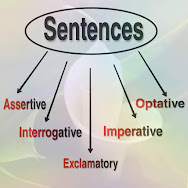Sentence
Introduction:
A sentence is a grammatically complete unit of language that expresses a complete thought. It is typically composed of one or more words that are arranged in a specific order according to the rules of grammar and syntax. A sentence can be made up of a subject, a verb, and an object, or it can be a simple statement that doesn't include all three components.
The subject of a sentence is usually a noun or pronoun that performs the action of the verb, or about which something is being said. The verb is a word that expresses an action or state of being, and it usually follows the subject. The object is the noun or pronoun that receives the action of the verb.
Sentences can be classified based on their structure. A simple sentence consists of one independent clause, which contains a subject and a verb and expresses a complete thought. A compound sentence contains two or more independent clauses joined by a coordinating conjunction such as "and," "or," or "but." A complex sentence contains one independent clause and one or more dependent clauses, which cannot stand alone as complete sentences.
Sentences can also be classified based on their function. A declarative sentence makes a statement or expresses an opinion. An interrogative sentence asks a question. An imperative sentence gives a command or makes a request. An exclamatory sentence expresses strong emotion or excitement.
In addition to the basic components of a sentence, there are many other elements that can be included, such as adjectives, adverbs, prepositions, and conjunctions. These elements help to modify or connect the words in the sentence and give it more nuance and complexity.
Definitions of "sentence":
1. A grammatically complete unit of language, consisting of one or more words that express a complete thought and typically containing a subject and predicate.
2. A group of words that expresses a complete thought, declaration, question, exclamation, or command, and that typically ends with a period, question mark, or exclamation point.
3. A unit of language larger than a phrase but smaller than a paragraph, consisting of one or more clauses and conveying a complete idea or thought.
4. A series of words that are syntactically linked and convey a complete thought or idea.
5. A construct that organizes words and phrases into a coherent and meaningful statement or question.
Types of Sentences


No comments:
Post a Comment